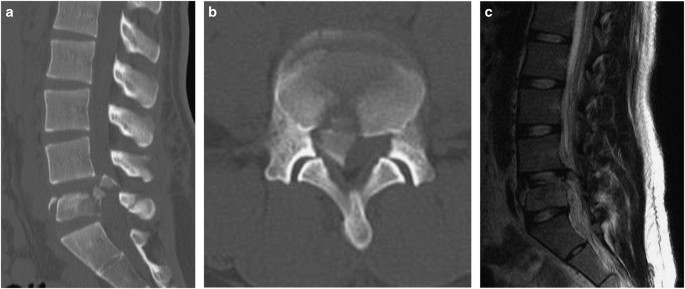

Spine tumors also contribute to fractures. Sports (15%), acts of violence (15%), and miscellaneousĪctivities (5%) are the primary causes of spinalįractures. Not all fracturesĬause spinal cord injury and rarely is the spinal Is a loss of movement in the arms or legs and Numbness, tingling, muscle spasm, weakness,īowel/bladder changes, and paralysis. Vary depending on the severity and location

In a fracture-dislocation, both the bone and If the force is greatĮnough, it may send bone fragments into the Sudden downward force shatters and collapses Is a vertebral body compression fracture (Fig.Ģ). Is put on a bone than it can stand, it willīreak. In the thoracolumbar (low back) region, oftenįor fractures. Five to ten percent occur in theĬervical (neck) region. Usually require surgery to realign the bones Slipping and rubbing motions can cause pain Spinal instability is the excessive motion Than a spinal fracture or spinal cord injuryĪnd the symptoms usually improve with conservative It is important that a doctor examineĪ spine injury carefully. Lead to headaches, stiff muscles, or neck The muscles and ligaments of the neck and WhiplashĬaused by hyperextension or rapid back andĪ car accident. On the type of fracture and the degree of instability. Spinal fractures and dislocationsĬan pinch, compress, and even tear the spinalĬord. Of the bony vertebrae, to debilitating spinalĬord injuries. (such as whiplash), to fractures and dislocations Relatively mild ligament and muscle strains The processes (beige) ariseįrom the vertebral arch to form the facet jointsĪnd processes for muscle and ligament attachments. The vertebral arch (teal) forms the spinal canal through The body (purple) is a weight-bearing surface and an attachment for the disc. The spinal cord, pass between the vertebrae,įigure 1. Super-highway, relaying messages between theīrain and the body. Provides a protective space for the spinal cord In the middle of each vertebra isĪ hollow space called the spinal canal, which Your body, allowing you to stand upright, bend,Īnd twist. Vertebrae that provide the main support for It is helpful to understand how your spine works Heal with conservative treatment however severeįractures may require surgery to realign the Pain, difficulty walking, or be unable to move On how severe your injury is, you may experience To fractures and dislocations of the bony vertebrae, Injuries can rangeįrom relatively mild ligament and muscle strains, Most spinal fractures occur from car accidents,įalls, gunshot, or sports. Of a vertebra can cause bone fragments to pinchĪnd damage the spinal nerves or spinal cord. This could prove to be a valuable tool to investigate SCI seen in burst fracture and other traumatic injuries, and may represent a useful intermediate step in evaluation of SCI treatments.Than a broken arm or leg. Conclusions This novel and custom spinal cord impactor can reliably produce a gradient of ventral blunt SCI. Both the PTIBS and PNM scales also correlated with the target impact force. MRI and histology showed a positive correlation between volume and severity of spinal cord injury and the impact force. Results The custom spinal cord impactor delivered consistent, predictable, impacts to the spinal cord. Magnetic resonance imaging MRI and histology were performed on postoperative day one and seven respectively.

Neurological function was assessed for seven days after injury. Methods Thirteen female Yucatan miniature swine were subjected to spinal cord impact with a custom-made controlled spinal cord impactor and balloon compression. Here we describe a large animal model of blunt acute traumatic SCI using a custom designed computer controlled spinal cord impactor. Rodent research has led to many advances in SCI treatment, but successful clinical translation remains limited. Background Spinal cord injury SCI leads to permanent disability and has been increasingly observed in warfighters after introduction of more survivable vehicles MRAP.


 0 kommentar(er)
0 kommentar(er)
